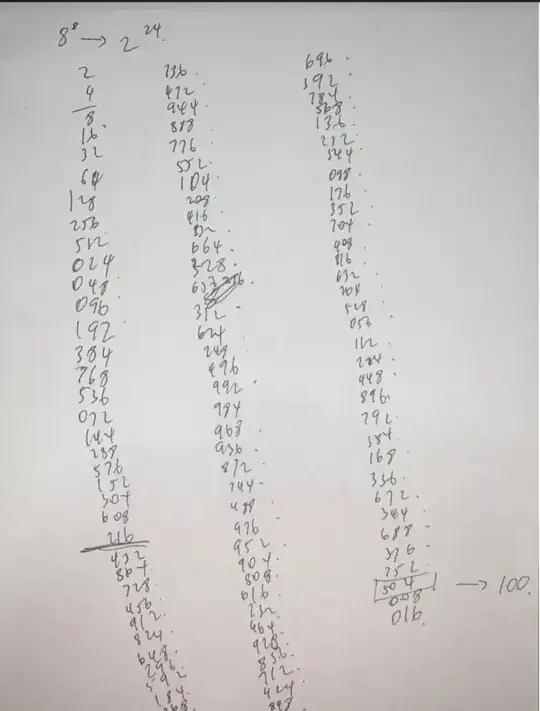I am attempting to find $8^{8^8}$ (which, by the way, means $8^{(8^8)}$) without any means such as computers/spreadsheets. Here's my attempt so far, and I'm pretty sure my answer is correct, but I would like a more efficient method.
First, I do the exponent: $8^8=(2^3)^8=2^{24}$, and I calculated that the last three digits are 216 by hand. I then know that $8^{(8^8)}\equiv8^{216} \pmod{1000}$, and so I have to calculate this and found that it repeats in cycles of $100$.
Using this information, I deduce that $8^{(8^8)}\equiv8^{216}\equiv8^{200}\cdot8^{16}\equiv8^{16}\equiv2^{48}\equiv656\pmod{1000}$
Is there is a more efficient way to solve this problem than just listing out all the remainders, as I have done? I would like to keep the explanation as basic as possible, without such devices as Euler's totient function, etc.
Someone has asked me if How do I compute $a^b\,\bmod c$ by hand? is what I wanted, but no, because I want to keep it as elementary as possible, and I also don't want any tedious calculations (as I have done).
